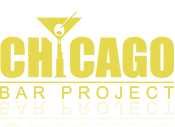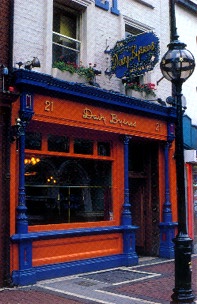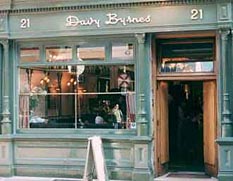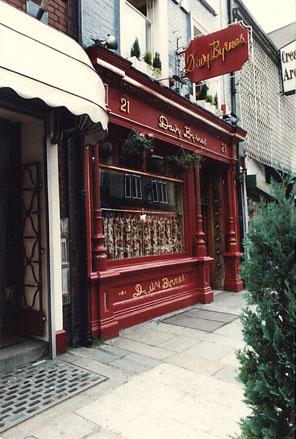Dublin 2
+353 (1) 677-5217
“Davy Byrnes. Moral pub.”
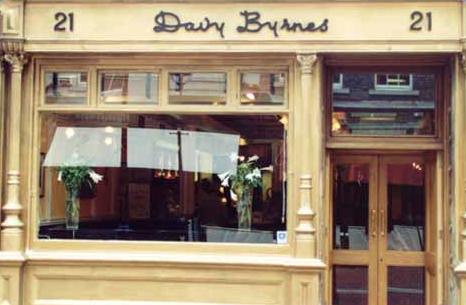 Just off Grafton Street is a pub that dates back to the turn of the 20th Century. During this time, Irish independence was still a dream and one of the greatest literary works of all time, Ulysses by James Joyce, was formulating in the young Dubliner’s mind as he moved between Trieste, Zürich and Paris in an attempt to survive the horrors of World War I. Written as a modern version of Homer’s Odyssey, the world came to know the character Leopold Bloom through James Joyce’s emulation of Homer’s hero “Odysseus” – also known as “Ulysses.”
Just off Grafton Street is a pub that dates back to the turn of the 20th Century. During this time, Irish independence was still a dream and one of the greatest literary works of all time, Ulysses by James Joyce, was formulating in the young Dubliner’s mind as he moved between Trieste, Zürich and Paris in an attempt to survive the horrors of World War I. Written as a modern version of Homer’s Odyssey, the world came to know the character Leopold Bloom through James Joyce’s emulation of Homer’s hero “Odysseus” – also known as “Ulysses.”
Many here Stateside may equate “Ulysses” more with the recent film O Brother, Where Art Thou? featuring George Clooney of From Dusk ’till Dawn fame. The Coen Brothers’ invocation of explicit references to Homer’s epic, without the benefit of actually having read it, is in stark contrast to Joyce’s painstaking adaptation of the text into a single Dublin day on June16, 1904. Part of that eventful day takes place in Davy Byrnes and, due to the embrace of its notoriety in Ulysses, Davy Byrnes is a tangible part of James Joyce’s masterpiece. Today, while you pontificate over Ulysses, feel free to do so over a gorgonzola and mustard sandwich while enjoying a glass of burgundy, or a Guinness for that matter, at Davy Byrnes. And if you’re in or around Dublin during the middle of June, make sure to stop in Davy Byrnes along with 10,000 of your closest friends to help celebrate “Bloomsday.”
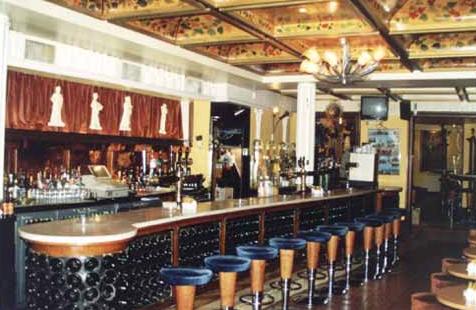 As you’re walking down Dublin’s famous shopping district, the pedestrian mall of Grafton Street (“Met her today point blank in Grafton Street. The crowd brought us together,” James Joyce wrote in Portrait of The Artist as A Young Man), turn onto Duke Street and you’ll find Davy Byrnes at No. 21 (incidentally, both streets were named after the Duke of Grafton). Over the years, the Victorian façade of Davy Byrnes has been repainted more often than Brendan Behan was arrested for disorderly conduct (including once when he was involved in a brawl outside the pub). “Davy Byrnes” glows in yellow neon from a blue sign and, below, enter through the wood and glass-paned doors just as Leopold Bloom once did (or at least James Joyce) a century before. Inside you’ll find rather plush surroundings for a pub, which is in stark contrast to old standbys like McDaids and the Stags Head. A row of padded, blue-velvet barstools mounted to the marble floor stand before a long bar with a marble-topped surface. From here, one may wax philosophic as you gaze at white Romanesque statues sculpted by Eddie Delaney and John Behan, placed before red velvet drapes that compliment the white trim around the room’s off-yellow walls. Additional seating can be found across from the bar at a series of low-slung tables and more barstools, and at the table in front of the large picture window framed by two glass vases that overlooks Duke Street. My advice: if you see an empty stool, grab it. Otherwise, standing can be a bit of a problem as the room is rather narrow. Just beyond the main bar is a Y-shaped intersection. Both back rooms offer another bar each, more velvet, additional wooden columns, and a plethora of mirrors to enable the subtle scoping of the talent at Davy Byrnes. An intriguing honeycomb sculpture is located above the bar on the left-hand side, and a colorful mural of a Dublin street scene by Liam Proud can be found on the right. Other murals around the bar, including, Morning, Noon and Evening, were painted in the 1940’s by Cecil French Salkeld, Brendan Behan’s father-in-law.
As you’re walking down Dublin’s famous shopping district, the pedestrian mall of Grafton Street (“Met her today point blank in Grafton Street. The crowd brought us together,” James Joyce wrote in Portrait of The Artist as A Young Man), turn onto Duke Street and you’ll find Davy Byrnes at No. 21 (incidentally, both streets were named after the Duke of Grafton). Over the years, the Victorian façade of Davy Byrnes has been repainted more often than Brendan Behan was arrested for disorderly conduct (including once when he was involved in a brawl outside the pub). “Davy Byrnes” glows in yellow neon from a blue sign and, below, enter through the wood and glass-paned doors just as Leopold Bloom once did (or at least James Joyce) a century before. Inside you’ll find rather plush surroundings for a pub, which is in stark contrast to old standbys like McDaids and the Stags Head. A row of padded, blue-velvet barstools mounted to the marble floor stand before a long bar with a marble-topped surface. From here, one may wax philosophic as you gaze at white Romanesque statues sculpted by Eddie Delaney and John Behan, placed before red velvet drapes that compliment the white trim around the room’s off-yellow walls. Additional seating can be found across from the bar at a series of low-slung tables and more barstools, and at the table in front of the large picture window framed by two glass vases that overlooks Duke Street. My advice: if you see an empty stool, grab it. Otherwise, standing can be a bit of a problem as the room is rather narrow. Just beyond the main bar is a Y-shaped intersection. Both back rooms offer another bar each, more velvet, additional wooden columns, and a plethora of mirrors to enable the subtle scoping of the talent at Davy Byrnes. An intriguing honeycomb sculpture is located above the bar on the left-hand side, and a colorful mural of a Dublin street scene by Liam Proud can be found on the right. Other murals around the bar, including, Morning, Noon and Evening, were painted in the 1940’s by Cecil French Salkeld, Brendan Behan’s father-in-law.
The many façades of Davy Byrnes
As should come as no surprise, a poster of James Joyce’s Ulysses hangs at the end of the front bar. In this epic tale, chapter eight to be exact, the hero Leopold Bloom has a light snack at Davy Byrnes following a brief episode in the restaurant at the base of the Burton Hotel, where Bloom witnessed a Laestrygonian-like, carnivorous display.
“He entered Davy Byrnes. Moral pub. He doesn’t chat, stands a drink now and then. But in a leap year once in four. Cashed a cheque for me once.”
– Leopold Bloom’ as he enters Davy Byrnes, Ulysses
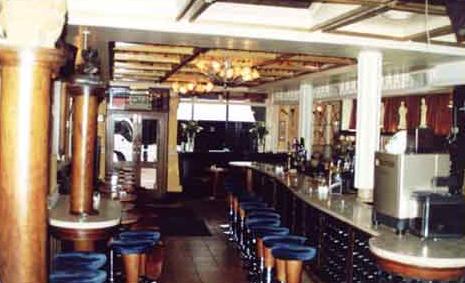 Upon my last visit, the pub didn’t appear too moral when an Irish lad tried to kiss my ex-girlfriend on her way back from the loo. While it is doubtful that they had velvet barstools back then, Leopold has a seat at the bar and orders a gorgonzola sandwich and a glass of burgundy, all for the princely sum of seven old pennies. “He raised his eyes and met the stare of a bilious clock. Two. Pub clock five minutes fast. Time going on. Hands moving. Two. Not yet.” The clock, reputedly, is still five minutes fast. “Mr Bloom ate his strips of sandwich, fresh clean bread, with relish of disgust, pungent mustard, the feety savour of green cheese. Sips of wine soothed his palate. Not logwood that. Tastes fuller this weather with the chill off.” One can still order a gorgonzola and mustard sandwich today, along with oysters, salads, other sandwiches, fried or smoked fish, traditional Irish stew, or a chargrilled 8-ounce fillet steak. Seafood is the specialty at Davy Byrnes. Wash that down with burgundy, Guinness, coffee, or tea. Just be forewarned: as noted by Robert Nicholson of the Joyce Tower Centre: “Davy Byrne’s is ‘a reeking hell of gorgonzola’ every Bloomsday,” which takes place every June 16th (the day on which the novel takes place in 1904). At this point in the story, “Davy Byrne came forward from the hindbar in tuckstitched shirtsleeves, cleaning his lips with two wipes of his napkin. Herring’s blush. Whose smile upon each feature plays with such and such replete. Too much fat on the parsnips. ‘And here’s himself and pepper on him,’ Nosey Flynn said. ‘Can you give us a good one for the Gold cup?'” Leopold then inadvertently overhears a horse-racing tip that gets him into trouble with a “cyclops” later in the novel.
Upon my last visit, the pub didn’t appear too moral when an Irish lad tried to kiss my ex-girlfriend on her way back from the loo. While it is doubtful that they had velvet barstools back then, Leopold has a seat at the bar and orders a gorgonzola sandwich and a glass of burgundy, all for the princely sum of seven old pennies. “He raised his eyes and met the stare of a bilious clock. Two. Pub clock five minutes fast. Time going on. Hands moving. Two. Not yet.” The clock, reputedly, is still five minutes fast. “Mr Bloom ate his strips of sandwich, fresh clean bread, with relish of disgust, pungent mustard, the feety savour of green cheese. Sips of wine soothed his palate. Not logwood that. Tastes fuller this weather with the chill off.” One can still order a gorgonzola and mustard sandwich today, along with oysters, salads, other sandwiches, fried or smoked fish, traditional Irish stew, or a chargrilled 8-ounce fillet steak. Seafood is the specialty at Davy Byrnes. Wash that down with burgundy, Guinness, coffee, or tea. Just be forewarned: as noted by Robert Nicholson of the Joyce Tower Centre: “Davy Byrne’s is ‘a reeking hell of gorgonzola’ every Bloomsday,” which takes place every June 16th (the day on which the novel takes place in 1904). At this point in the story, “Davy Byrne came forward from the hindbar in tuckstitched shirtsleeves, cleaning his lips with two wipes of his napkin. Herring’s blush. Whose smile upon each feature plays with such and such replete. Too much fat on the parsnips. ‘And here’s himself and pepper on him,’ Nosey Flynn said. ‘Can you give us a good one for the Gold cup?'” Leopold then inadvertently overhears a horse-racing tip that gets him into trouble with a “cyclops” later in the novel.
~ Have a good story relating to this pub? Email us. ~
“Nice quiet bar. Nice piece of wood in that counter. Nicely planned. Like the way it curves there.”
– Leopold Bloom’s description of Davy Byrnes, Ulysses
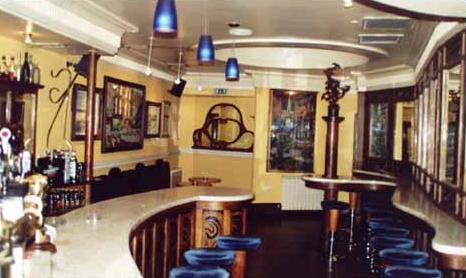 As for Davy Byrne, County Wicklow native and wagerer of horses, the public house he named after himself was opened on January 11, 1889, according to the Davy Brynes website. While having been a pub since 1789, the premises enjoyed a rebirth of sorts under the stewardship of Davy Byrne, noted Dublin vintner, allowing it to compete more handedly with the Bailey just down the block at the corner. Over the next half of a century, Davy Byrnes attracted students from nearby Trinity College along with some of Dublin’s best writers like Oliver St John Gogarty, James Stephens, Liam O’Flaherty, Padraig O’Conaire, Myles na gCopaleen, Patrick Kavanagh, Anthony Cronin, Brendan Behan, and, of course, James Joyce. Here, Joyce befriended the “friendly but abstemious” Davy Byrne and immortalized him in Ulysses. In addition to this notoriety, Davy Byrnes was also reportedly the place where several leaders of the Irish independence movement, like Michael Collins and Arthur Griffith, came to the pub after the signing of the declaration in 1922. According to Protz on Beer, “In the 1920s, during protracted negotiations in London over Irish independence, Michael Collins sent a telegram to Davy Byrne: ‘Send over a bottle of brandy and a soda syphon to settle the Irish question’. Byrne was not renowned for his generosity but he did give Arthur Griffiths a free bottle of wine on the day independence was achieved.” Sometime after that, the Irish playwright Samuel Beckett allegedly lived in the flat above. Today, the pub is operated by the Doran Family of Marlborough Street (Redmond Doran, specifically), having acquired it in 1942 following Davy Byrne’s retirement in 1939, and the pub serves as the final stop on the infamous Dublin Literary Pub Crawl. Davy Byrnes now draws business people along with, “a mix of locals who haven’t read Joyce’s unique slice of Dublin life and tourists who’ve devoured the book several times over and are only too keen to discuss it,” as noted by Time Out Dublin.
As for Davy Byrne, County Wicklow native and wagerer of horses, the public house he named after himself was opened on January 11, 1889, according to the Davy Brynes website. While having been a pub since 1789, the premises enjoyed a rebirth of sorts under the stewardship of Davy Byrne, noted Dublin vintner, allowing it to compete more handedly with the Bailey just down the block at the corner. Over the next half of a century, Davy Byrnes attracted students from nearby Trinity College along with some of Dublin’s best writers like Oliver St John Gogarty, James Stephens, Liam O’Flaherty, Padraig O’Conaire, Myles na gCopaleen, Patrick Kavanagh, Anthony Cronin, Brendan Behan, and, of course, James Joyce. Here, Joyce befriended the “friendly but abstemious” Davy Byrne and immortalized him in Ulysses. In addition to this notoriety, Davy Byrnes was also reportedly the place where several leaders of the Irish independence movement, like Michael Collins and Arthur Griffith, came to the pub after the signing of the declaration in 1922. According to Protz on Beer, “In the 1920s, during protracted negotiations in London over Irish independence, Michael Collins sent a telegram to Davy Byrne: ‘Send over a bottle of brandy and a soda syphon to settle the Irish question’. Byrne was not renowned for his generosity but he did give Arthur Griffiths a free bottle of wine on the day independence was achieved.” Sometime after that, the Irish playwright Samuel Beckett allegedly lived in the flat above. Today, the pub is operated by the Doran Family of Marlborough Street (Redmond Doran, specifically), having acquired it in 1942 following Davy Byrne’s retirement in 1939, and the pub serves as the final stop on the infamous Dublin Literary Pub Crawl. Davy Byrnes now draws business people along with, “a mix of locals who haven’t read Joyce’s unique slice of Dublin life and tourists who’ve devoured the book several times over and are only too keen to discuss it,” as noted by Time Out Dublin.
While some may critique Davy Byrnes as an unremarkable Irish pub with unfortunate art deco motif, one would be hard-pressed at claim that it is anything short of a living legend. Tourists and literati alike continue to flock to Davy Byrnes to experience a living part of James Joyce’s century-old opus, Ulysses. You can too. Just head down Grafton Street, take care to avoid the Laestrygonians even though Burton’s Restaurant is long gone, turn the corner at Duke Street and step up into the world-famous Davy Byrnes. To me, Davy Byrnes is a very cool bar but has a polish that precludes that classic Dublin pub feel. On the other hand, you gotta love the velvet. If that makes me seem a bit weird, just call me “Cashel Boyle O’Connor Fitzmaurice Tisdall Farrell.” Regardless of your perspective, Davy Byrnes’ place in literary history makes it a must-visit when in Dublin. Hopefully, afterwards you won’t feel the same way as poor Bloom: “Me. And me now.” Barkeep! A pint of Guinness and pass the mustard.
“Go on a Saturday afternoon and spend all afternoon there. They show the latest scores on Ceefax during the football season. Mentioned in Ulysses, though you’d never know it from the modern décor. Attracts an amazing crowd – locals, tourists, mad old people… Good, high-quality food and great staff. A good pub for meeting and chatting with eccentrics.”
– excerpt from the Dublin Pub Guide by “tony”
